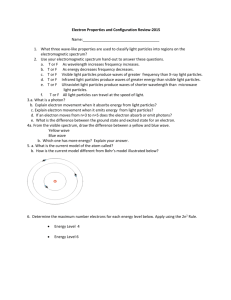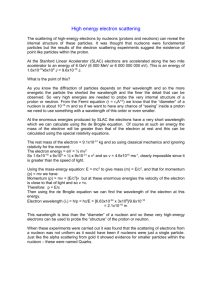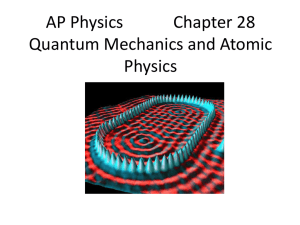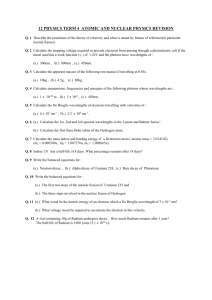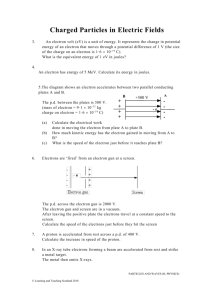Word
advertisement
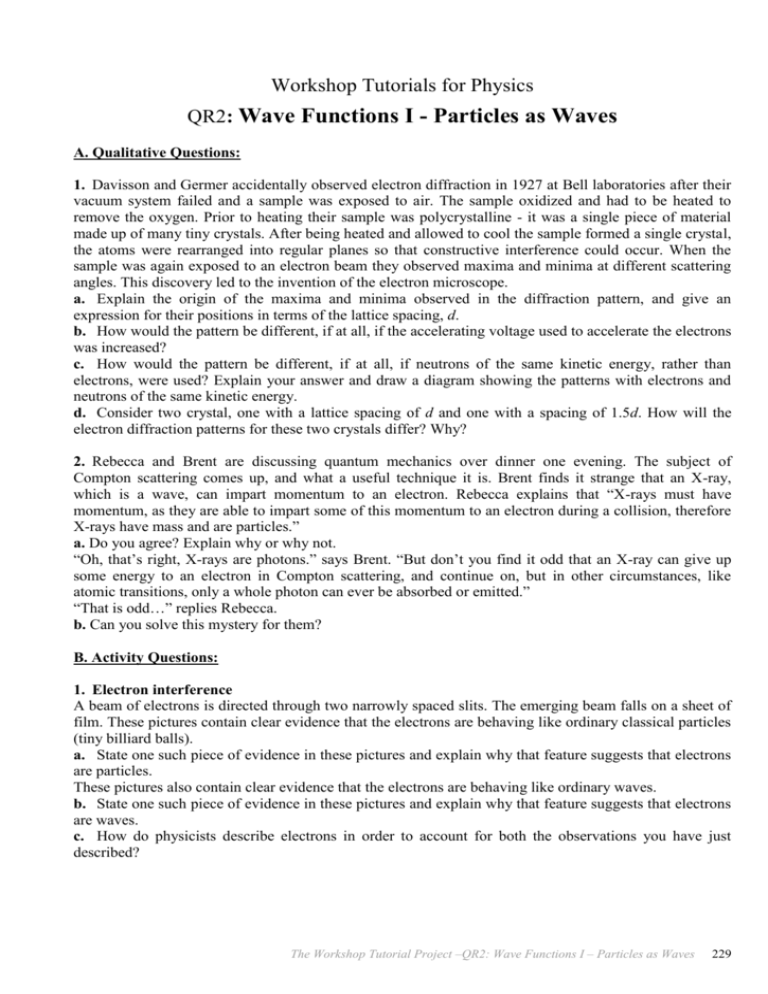
Workshop Tutorials for Physics QR2: Wave Functions I - Particles as Waves A. Qualitative Questions: 1. Davisson and Germer accidentally observed electron diffraction in 1927 at Bell laboratories after their vacuum system failed and a sample was exposed to air. The sample oxidized and had to be heated to remove the oxygen. Prior to heating their sample was polycrystalline - it was a single piece of material made up of many tiny crystals. After being heated and allowed to cool the sample formed a single crystal, the atoms were rearranged into regular planes so that constructive interference could occur. When the sample was again exposed to an electron beam they observed maxima and minima at different scattering angles. This discovery led to the invention of the electron microscope. a. Explain the origin of the maxima and minima observed in the diffraction pattern, and give an expression for their positions in terms of the lattice spacing, d. b. How would the pattern be different, if at all, if the accelerating voltage used to accelerate the electrons was increased? c. How would the pattern be different, if at all, if neutrons of the same kinetic energy, rather than electrons, were used? Explain your answer and draw a diagram showing the patterns with electrons and neutrons of the same kinetic energy. d. Consider two crystal, one with a lattice spacing of d and one with a spacing of 1.5d. How will the electron diffraction patterns for these two crystals differ? Why? 2. Rebecca and Brent are discussing quantum mechanics over dinner one evening. The subject of Compton scattering comes up, and what a useful technique it is. Brent finds it strange that an X-ray, which is a wave, can impart momentum to an electron. Rebecca explains that “X-rays must have momentum, as they are able to impart some of this momentum to an electron during a collision, therefore X-rays have mass and are particles.” a. Do you agree? Explain why or why not. “Oh, that’s right, X-rays are photons.” says Brent. “But don’t you find it odd that an X-ray can give up some energy to an electron in Compton scattering, and continue on, but in other circumstances, like atomic transitions, only a whole photon can ever be absorbed or emitted.” “That is odd…” replies Rebecca. b. Can you solve this mystery for them? B. Activity Questions: 1. Electron interference A beam of electrons is directed through two narrowly spaced slits. The emerging beam falls on a sheet of film. These pictures contain clear evidence that the electrons are behaving like ordinary classical particles (tiny billiard balls). a. State one such piece of evidence in these pictures and explain why that feature suggests that electrons are particles. These pictures also contain clear evidence that the electrons are behaving like ordinary waves. b. State one such piece of evidence in these pictures and explain why that feature suggests that electrons are waves. c. How do physicists describe electrons in order to account for both the observations you have just described? The Workshop Tutorial Project –QR2: Wave Functions I – Particles as Waves 229 2. Wave and particle nature of light 1- interference pattern Observe the interference pattern produced by the laser light passing through the slits. Does this experiment show the wave nature or particle nature of light? Explain your answer. 3. Wave and particle nature of light 2- emission spectra Use the spectroscope to examine the spectral lines of the hydrogen lamp. Which model of light does this experiment support? Explain your answer. C. Quantitative Questions: 1. Quantum physics tells us that matter has both a wave and particle nature. The wave nature of matter can be described using de Broglie wavelengths. a. If the following particles all have an energy of 10 keV, which has the shortest wavelength: electron, alpha particle, neutron, proton? Which has the longest wavelength? In an ordinary colour television set, electrons are accelerated through a potential difference of 25 kV. b. How much energy does the electron gain as it is accelerated? c. What is the de Broglie wavelength of such electrons? 2. In 1923 Compton measured the scattering of X-rays by electrons. Classical wave theory predicts that if an electromagnetic wave of frequency f is incident on a material containing charges, the charges will oscillate at the same frequency and reradiate electromagnetic waves of the same frequency. Compton observed that there was a change in frequency, and that the electrons absorbed some energy from the Xrays. He explained this by modeling the interaction between the electron and the photon as a collision. Prior to colliding with a “stationary” electron, an X-ray has a wavelength of 6.0 pm. The photon collides with an electron head on so that it is scattered at 180o. a. What is the wavelength of the scattered photon? b. What is the difference in energy between the incident and the scattered photons? c. What is the energy of the scattered electron? 230 The Workshop Tutorial Project –QR2: Wave Functions I – Particles as Waves



